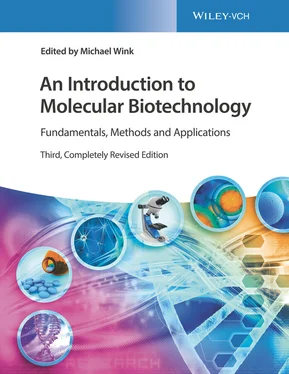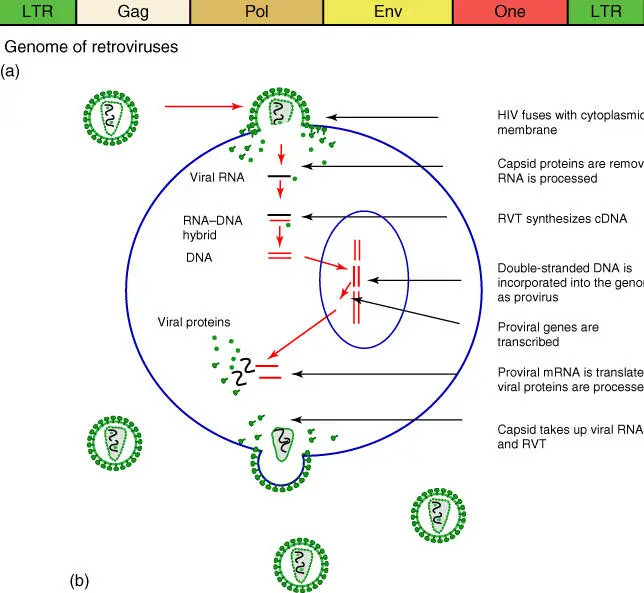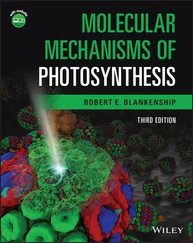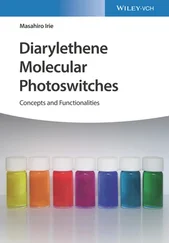| Class |
Example/disease |
| I. dsDNA (double‐stranded DNA) |
| Papilloma virus |
Papilloma warts, cervical cancer |
| Adeno virus |
Infections of the respiratory tract, tumors in animals |
| Herpes simplex virus 1 |
HV I (blisters on skin), HV II (blisters on genitals) |
| Varicella zoster virus |
Chicken pox, shingles |
| Epstein–Barr virus (EPV) |
Mononucleosis, Burkitt lymphoma |
| Smallpox virus (variola) |
Smallpox |
| II. ssDNA (single‐stranded DNA) |
| Hepatitis B virus (HPV) |
Hepatitis B |
| Parvovirus |
“slapped‐cheek disease” |
| III. dsRNA (double‐stranded RNA) |
| Reovirus |
Diarrhea viruses, diseases of the respiratory tract |
| IV. ssRNA (working as mRNA) |
| Poliovirus |
Poliomyelitis |
| Rhinovirus |
Common cold |
| Coronavirus |
Common cold, respiratory disease, SARS, MERS, Covid‐19 |
| Hepatitis A virus |
Hepatitis A |
| Hepatitis C virus |
Hepatitis C |
| Yellow fever virus |
Yellow fever |
| Togavirus |
Rubella |
| West Nile virus |
Flu‐like symptoms |
| Zika virus |
Flu‐like symptoms |
| Dengue virus |
Dengue fever |
| V. ssRNA (used as matrix for mRNA synthesis) |
| Rhabdovirus |
Rabies |
| Paramyxovirus |
Measles, mumps |
| Influenza virus |
Influenza viruses (H1N1, H5N1) |
| VI. ssRNA (used as matrix for DNA synthesis) |
| Retrovirus |
RNA tumor viruses, HIV (AIDS) |
Viral nucleic acid (Table 3.7) is enclosed by a protein envelope or capsid. Many viruses carry a biomembrane on the outside, which is derived from the host cell. It contains viral proteins (envelope proteins) that act as antigens. Viral proteins are often very variable. By modifying their surface antigen, whenever they multiply, they are able to outcompete the immune system, which cannot keep up the speed to produce the latest specific antibodies. Viral proteins are tailor‐made for each other. This enables them to spontaneously form supramolecular complexes and infectious viral particles.
The cellular equivalent of a viral oncogene is known as proto‐oncogene.
Phages and viruses are important not only as pathogens but also as vectors for cloning and gene therapy.
| Cell and tissue type |
Function |
| A. Plant cells and tissues |
| All plant organs consist of three basic kinds of tissue (epidermal, ground, and vascular tissue) |
| Epidermal tissue |
| Epidermis |
Epidermal cells form one or two layers of epidermis with a thick cuticle |
| Guard cells |
Gas exchange |
| Trichomes |
Epidermal hair cells: storage of terpenes; protection against evaporation |
| Root hairs |
Uptake of water and ions |
| Endodermis |
Innermost layer of the cortex |
| Protoderm |
Primary meristem (growth of the epidermal tissues) |
| Ground tissue |
| Parenchyma |
Not very specialized, flexible primary walls |
| Mesophyll cells |
Photosynthesis |
| Storage parenchyma |
Storage tissue |
| Xylem parenchyma |
Exchange of substances with xylem vessel elements |
| Collenchyma cells |
Living cells with thick primary walls (support), no secondary walls and no lignin |
| Sclerenchyma |
Dead cells with a support function |
| Fiber cells |
Long extended lignified sclerenchyma cells |
| Sclereids (stone cells) |
Irregularly shaped sclerenchyma cells with thick lignified secondary walls |
| Ground meristem |
Primary meristem (growth of ground tissue) |
| Vascular tissue |
| Phloem |
Transport of synthesized nutrients (sucrose, amino acids) to roots, stems, and fruits |
| Sieve tube element |
Living cell without nucleus and ribosomes, sieve plates between neighboring sieve cells |
| Companion cell |
Exchange of substances with sieve tube elements |
| Xylem |
Transport of water and inorganic ions |
| Tracheids |
Long tubular system consisting of dead cells (sclerenchyma) |
| Vessel elements |
Lignified secondary walls with pits, surrounded by living xylem parenchyma |
| Procambium |
Primary meristem (growth of vascular tissue) |
| B. Animal cells |
| The human body contains more than 200 cell types and 4 types of tissues (epithelia, connective tissue, nerves, and muscles) |
| Embryonic stem cell |
Omnipotent cell that can differentiate into all other cell types |
| Epithelia |
| Intestinal cells |
Prismatic epithelial cells, secretion of digestive juices, and absorption of nutrients |
| Ciliated epithelium |
Prismatic epithelial cells, secretion and absorption, transport of mucus (bronchial epithelium) |
| Glandular cells |
Cubic epithelial cells in glands and kidney tubules, main function secretion |
| Endothelial cells |
Simple squamous epithelium inside blood vessels |
| Connective tissue |
| Fibroblast |
Production of proteins for the extracellular network, including collagen and elastin and many other proteins |
| Osteoblast |
Bone‐producing cell |
| Chondrocyte |
Cartilage production, secretion of collagen and chondroitin sulfate |
| Adipocyte |
Production and storage of fat in fat tissue |
| Mast cells |
Storage and release of histamine |
| Blood |
| Hematopoietic stem cell |
Precursor cell of all other blood cells |
| Erythrocyte |
Oxygen and CO 2transport through hemoglobin |
| Platelet |
Blood coagulation |
| Lymphocyte |
Specificity and diversity of immune response |
| T cells |
T helper cells (T h) recognize antigens and activate B cells |
| Cytotoxic T cells |
T ccells recognize antigens and attack infected cells |
| B cells |
Form antibody‐secreting plasma cells |
| Monocytes |
Migrate to infection foci and mature into macrophages, devouring bacteria and debris |
| Granulocytes (leucocytes) |
|
| Neutrophilic granulocytes |
Phagocytize bacteria |
| Eosinophilic granulocytes |
Destroy parasites, important in allergies |
| Basophilic granulocytes |
Release histamines in some immune reactions |
| Natural killer cells |
Destroy infected body cells and tumor cells |
| Nerve tissue |
| Neuron |
Reception, storage, and transport of information |
| Glial cell |
Supporting the structure and metabolism of neurons |
| Schwann cell |
Forming a myelin sheath around the axons of the peripheral nervous system |
| Oligodendrocyte |
Forming a myelin sheath around the axons of the central nervous system (CNS) |
| Astrocyte |
Large glial cells that give structural and metabolic support to neurons are crucial for the blood–brain barrier |
| Sensory cells |
| Mechanoreceptor cells |
Cells containing mechanoreceptors that are sensitive to pressure, touch, stretching, movement, and sound |
| Hair cells |
Cells (in the ear of vertebrates, in the side lines of fish) with mechanoreceptors that pick up movement in relation to their surroundings and sounds |
| Pain receptor cells |
Cells containing nociceptors; free nerve endings (dendrites), e.g. in the epidermis. Nociceptors react to heat, pressure, and irritants and are sensitized by prostaglandins |
| Temperature receptor cells |
Cells containing thermoreceptors that gauge the temperature |
| Taste receptor cells |
Cells containing chemical and taste receptors. They can distinguish the categories sweet, sour, salty, and bitter |
| Smell receptor cells |
Cells containing smell receptors |
| Light receptor cells |
In the retina of vertebrae, cones and rods serve as photoreceptors |
| Muscles |
| Striated muscle cell |
Rapid and forceful contractions (skeletal muscle), controlled via the somatic nervous system |
| Smooth muscle cell |
Slow and sustained contractions (in the intestine tract, in bladder, in arteries, and in veins); no striation, controlled via the autonomous nervous system |
| Heart muscle cell |
Striated, heart contraction |
| Gametes |
| Sperm cells |
Male gamete (haploid) |
| Egg cells |
Female gamete (haploid) |




![Andrew Radford - Linguistics An Introduction [Second Edition]](/books/397851/andrew-radford-linguistics-an-introduction-second-thumb.webp)








